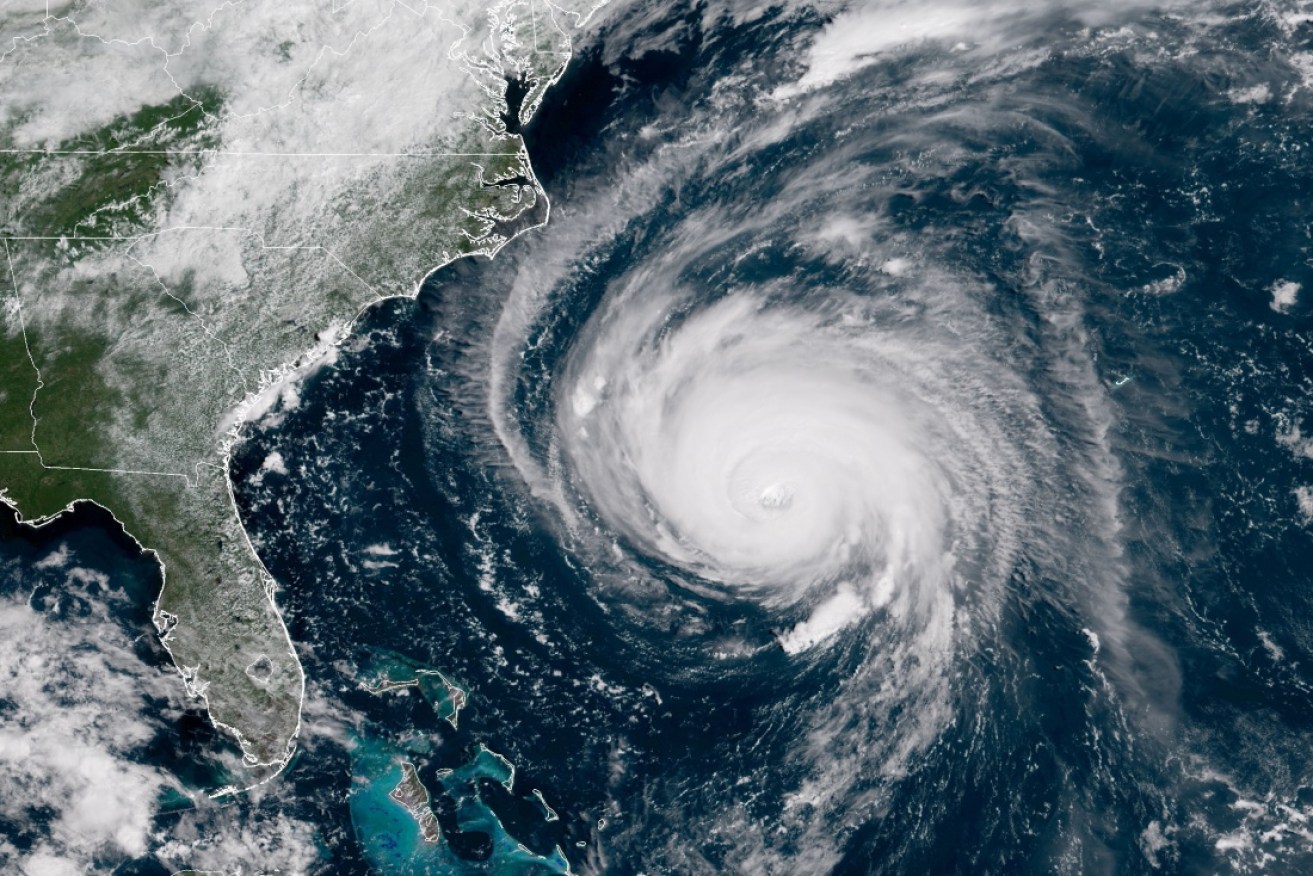Hurricane Florence growing in size, intensity as it nears US coast

Florence has weakened, but is still producing 193km/h winds. Photo: Getty
Hurricane Florence, growing in size and intensity, is barrelling closer to the US east coast as disaster mobilisations expand south from the Carolinas into Georgia.
The expanding storm has put a corridor of more than 10 million people in its path, with the hurricane expected on the North Carolina coast on Friday.
From its initial landfall, Florence is expected to drift south-west along the shoreline before turning inland on Saturday, according to the US National Hurricane Centre in Miami.
The storm’s maximum sustained winds have already been clocked at at 185km/h.
Although Florence was downgraded from a Category 4 to a Category 3 storm on the five-step Saffir-Simpson scale of wind strength, the NHC warns Florence still poses a deadly threat to a wide stretch of the US coast.
Forecasters said the storm’s total energy grew as its inner core and outlying bands of wind expanded.
“The time to prepare is almost over,” North Carolina Governor Roy Cooper said.
“Disaster is at the doorstep and it’s coming in.”
Florence’s predicted slow southward turn would mean some coastal areas could get damaging hurricane-force winds for days.
Ever stared down the gaping eye of a category 4 hurricane? It's chilling, even from space. #HurricaneFlorence #Horizons https://t.co/RdDmGgduou pic.twitter.com/2TlMghY4OL
— Alexander Gerst (@Astro_Alex) September 12, 2018
In addition to inundating the coast with wind-driven storm surges of seawater as high as four metres along the Carolina coast, Florence could dump up to 76 centimetres of rain, and up to one metre in parts of North Carolina, the NHC said.
Downpours and flooding would be especially severe, lasting for days, if the storm stalled over land.
Heavy rain was forecast to extend into the Appalachians, affecting parts of Alabama, Tennessee, Kentucky and West Virginia.
Tens of thousands of homes and businesses could be flooded in North Carolina alone, Governor Cooper warned.
Georgia Governor Nathan Deal, concerned the storm would bring devastation south, issued an emergency declaration for his entire state.
Similar declarations were made earlier in North and South Carolina, Virginia, Maryland and the District of Columbia.
More than one million have been ordered to evacuate the coastlines of the Carolinas and Virginia.
Authorities in Chatham County, Georgia, which borders South Carolina and includes the historic port city of Savannah, urged residents who felt unsafe “to evacuate as they see fit”.
An estimated 10 million people live in areas expected to be placed under a hurricane or storm advisory, said Marc Chenard of the US Weather Prediction Centre.
Emergency preparations in the region included activating more than 2700 National Guard troops, stockpiling food, setting up shelters, switching traffic patterns so major roads led away from shore, and securing 16 nuclear power reactors in the Carolinas and Virginia.
-with AAP








